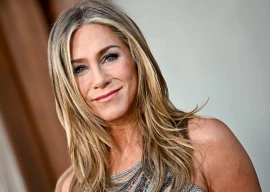
But the outcome of his impassioned warnings to speculators has been surprising. The rupee has appreciated by 1.9% against the dollar in the interbank market from December 2 to December 19. The rupee’s strength has been more pronounced in the open market where its value increased by 3.1% over the same period.
Keeping in mind that the rupee depreciated by as much as 9% in the first five months of the current fiscal year alone, one wonders what magic wand Dar waved to fix deep-rooted problems overnight. After all, the rupee has appreciated against the dollar in only two of the last 30 years (2002 and 2003) while the average depreciation of the rupee over the same period has remained at 6.5%.

According to KASB Securities, a Karachi-based research and brokerage house, December has recorded the fourth highest monthly currency appreciation in the last 30 years.
Speaking to a TV channel on December 3, Dar had reportedly vowed to bring the dollar back to Rs98. Although he later clarified the statement by saying the rebound in the rupee’s value would be similar to the one witnessed in 1998-99, Dar continued to warn speculators of an imminent drop in the value of the dollar.
He also urged exporters to repatriate their export proceeds in order to shore up foreign currency reserves.
His persistent calls to the quarters concerned finally start bearing fruit after the first week of December with the rupee gaining strength in the currency market. It was met with Pakistan receiving a long-anticipated inflow of $144 million from the United Kingdom’s Department for International Development, $137 million from the Islamic Development Bank and $149 million from other multilateral institutions.
From a 12-year low of $2.9 billion a week earlier, the inflow of $505 million increased the State Bank of Pakistan (SBP)-held foreign reserves to $3.4 billion on December 13, giving the rupee a long-due respite.
But is the recent improvement in the rupee-dollar parity sustainable? Dar claimed on a public forum recently that he could ‘guarantee’ the rupee would not slide back.
However, most analysts seem unimpressed with the certitude shown by the finance minister. “We continue to expect the rupee-dollar parity to reach Rs112 by June 2014,” said KASB Securities research analyst Farrukh Khan.
Saying that although the recent improvement in the rupee’s value has been swift, Khan noted that the reserves situation has not changed significantly. The rupee-dollar parity was Rs98 in December 2012 when the country’s total liquid reserves stood at $13.5 billion, he noted while implying that the recent development in the currency market will likely be a short-lived phenomenon. Pakistan’s total liquid foreign reserves were $8.5 billion on December 13.
Similarly, another brokerage house, Global Securities, estimates the rupee-dollar parity will be Rs109 at the end of fiscal year 2013-14.
Speaking to The Express Tribune, the head of the foreign exchange desk in the treasury department of a leading private bank said he estimates the dollar to stay around Rs110 by the end of June 2014.
“I think it’ll be wrong to say that the rupee will appreciate against the dollar going forward. Our current account deficit is higher than usual, which will inevitably put the rupee under pressure,” he said while requesting anonymity.
Current account deficit
Pakistan’s current account deficit widened to $1.8 billion in the first five months of fiscal 2013-14 as opposed to a deficit of $684 million in the corresponding period of last year, according to data released by the SBP on Friday.
The current account deficit – the value of how much a country’s imports exceed its exports− in November was $589 million as opposed to $96 million in October.
Published in The Express Tribune, December 21st, 2013.
Like Business on Facebook, follow @TribuneBiz on Twitter to stay informed and join in the conversation.
COMMENTS (3)
Comments are moderated and generally will be posted if they are on-topic and not abusive.
For more information, please see our Comments FAQ












































I am not sure why ET is crying about all this. If Foreign Exchange companies and Ishaq Dar is doing it artificially, the bubble will burst some day. But if its happening(and it was bound to happen because internally Banks were involved in speculation) than whats the big deal? The trade deficit is going down, remittances going up, the only reason of CA deficit is because govt is paying back IMF loans
There should always be balance in exchange rate for an economy, although deprecating rupees have positive impact on export but makes import expensive. Further it also leave negative impact on our foreign liabilities which have gone high recently.
Is an appreciating rupee a good thing for exports and remittances?